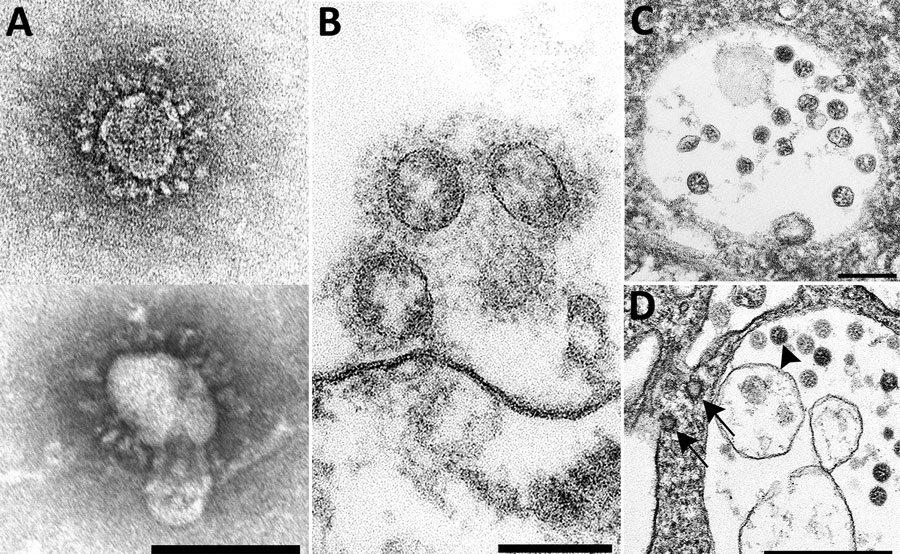Volume 27, Number 4—April 2021
Synopsis
Difficulties in Differentiating Coronaviruses from Subcellular Structures in Human Tissues by Electron Microscopy
Figure 1

Figure 1. Overview of the ultrastructural features of coronavirus morphology as seen by negative stain and thin section. A) Extracellular viral particles ≈100 nm in diameter with prominent peplomers (spikes). Prepared from a cell culture sample by negative stain using heavy metal salt solutions to coat the outside of the virus. Scale bar indicates 100 nm. B) Extracellular viral particles ≈100 nm in diameter with clearly visible spikes. Cross sections through the helical nucleocapsid are visible on the interior of the particle as electron-dense black dots, 6–12 nm in diameter. Prepared by thin section from a formalin-fixed autopsy specimen. Scale bar indicates 100 nm. C) Intracellular viral particles ≈80 nm in diameter held within a membrane-bound vacuole. Cross sections through the helical nucleocapsid are visible inside the particles. Prepared by thin section from a formalin-fixed autopsy specimen. Scale bar indicates 200 nm. D) Intracellular viral particles (arrowhead) within a membrane-bound vacuole and nearby clathrin-coated vesicles (CCV) in the cytoplasm (arrows). CCV spikes directly contact the cell cytosol; viral spikes, barely visible as a faint fuzz, contact the vacuole contents. Cross sections through the helical nucleocapsid are visible inside the viral particles but not within the CCVs. Prepared by thin section from a glutaraldehyde-fixed cell culture sample. Scale bar indicates 500 nm.